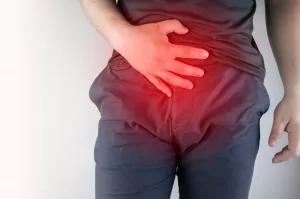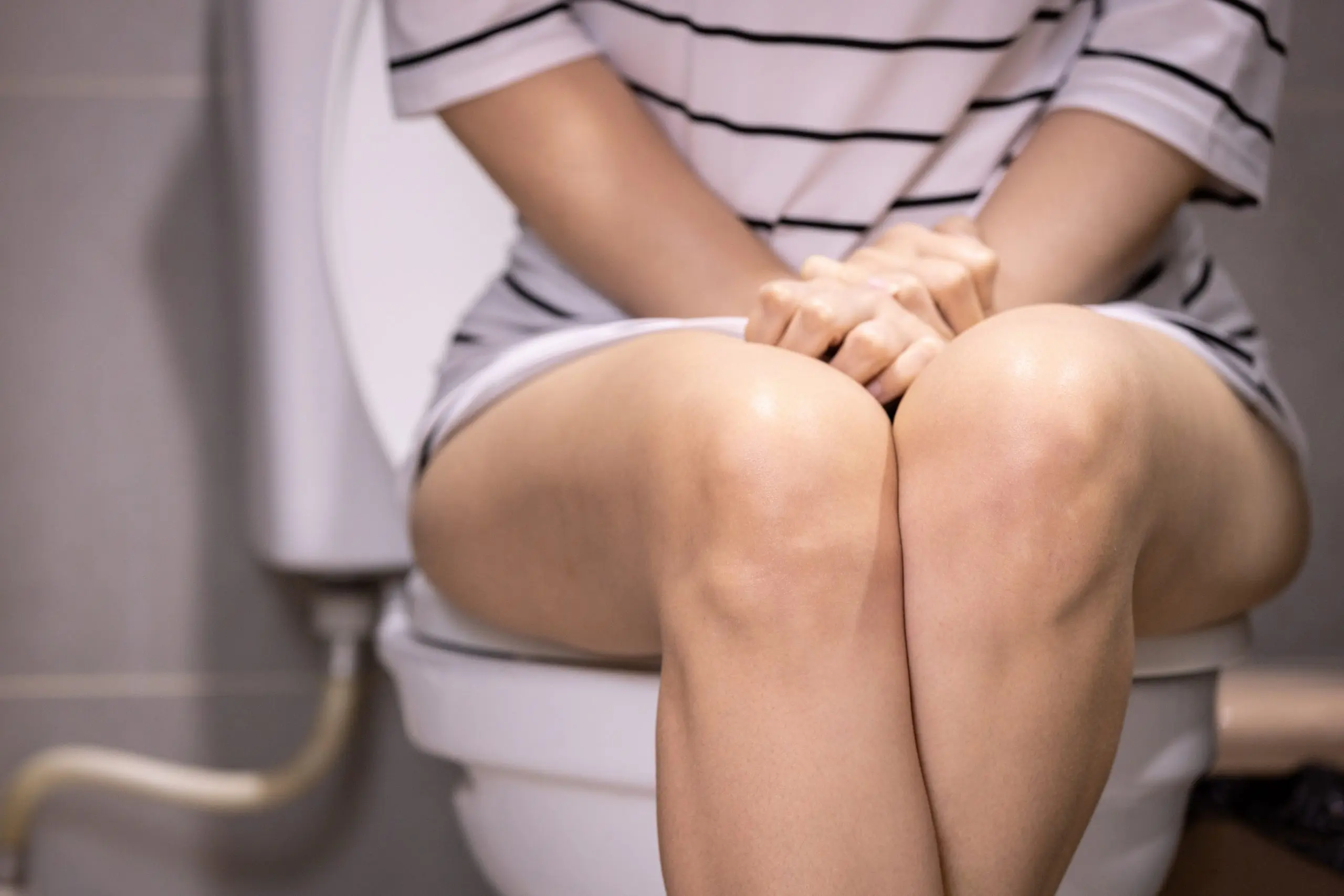Inguinal hernia
Medically Reviewed by Dr Aifric Boylan
Last updated on 11.06.2024
A hernia is a bulge or protrusion through a weakness or an opening. An inguinal hernia is one that occurs in the groin where the abdomen meets the hips and usually involves tissue, fat and sometimes intestines pushing through the opening.
Inguinal hernias are much more common in men, at a rate of eight to one. They can occur at any age, from infants to the elderly. They become more common as we age.
Types of hernia
- Indirect inguinal hernia
The bulge in the groin (which can contain fat or intestines) can push through and end up in the scrotum. In severe cases, the scrotum can be swollen and the size of a basketball because the intestines travel from the abdomen into the scrotum. This type is more common in children and adults who weren’t diagnosed as children.
- Direct inguinal hernia
The fat or intestines remain in the groin and cannot travel into the scrotum. This type is more common in adults and the elderly.
What does a hernia look like?
The main symptom of an inguinal hernia is the lump or bulge in the groin. These can be painless, intermittently sore or severely painful depending on triggers and size.
The hernia can also cause discomfort in the scrotum or feel like a nag in the tummy or hip. Sometimes men describe a dragging sensation in the pelvis.
You can have an inguinal hernia on one or both sides.
Most hernias are mildly uncomfortable but in extreme cases, they can twist and cause severe pain which is a medical emergency. In this instance, you need an operation to untwist the hernia and you must call 000 or go to a hospital urgently.
What causes a hernia?
Indirect inguinal hernias are caused by an anatomical defect from birth. Nothing can be done to prevent this.
Sometimes, there is no obvious cause or trigger for inguinal hernias. As you age, other triggers for inguinal hernias include anything that increases pressure in your abdomen, such as:
- Obesity
- Heavy lifting
- Chronic cough
- Chronic constipation

How to treat a hernia
Inguinal hernias are common and treatment is usually straightforward, particularly if it is done early.
Your GP can organise an ultrasound to diagnose your inguinal hernia. It is best to have your inguinal hernia repair done before it becomes an emergency. This is usually a day procedure and sometimes you return home on the same day.
Further resources & patient information about inguinal hernias
Inguinal hernias: Causes, Symptoms and Treatment – Patient.info
Getting a Mental Health Care Plan in Australia: Your Guide
Getting a Mental Health Care Plan in Australia: Your Guide Mental health matters—and if you’re feeling overwhelmed, anxious, or down, a mental health care plan can help. But what is it, and how do [...]
UTI Symptoms and Treatment: What You Need to Know
UTI Symptoms and Treatment: What You Need to Know Urinary Tract Infections (UTIs) are common, uncomfortable, and often disruptive. But what exactly are the signs to watch for, and how can you get relief [...]
Free Mental Health Care Plan Online | Bulk-Billed by Qoctor
Free Mental Health Care Plan Online | Bulk-Billed by Qoctor Discover how to get a free, bulk-billed Mental Health Care Plan (MHCP) in Australia through Qoctor's telehealth service. Accessing [...]





